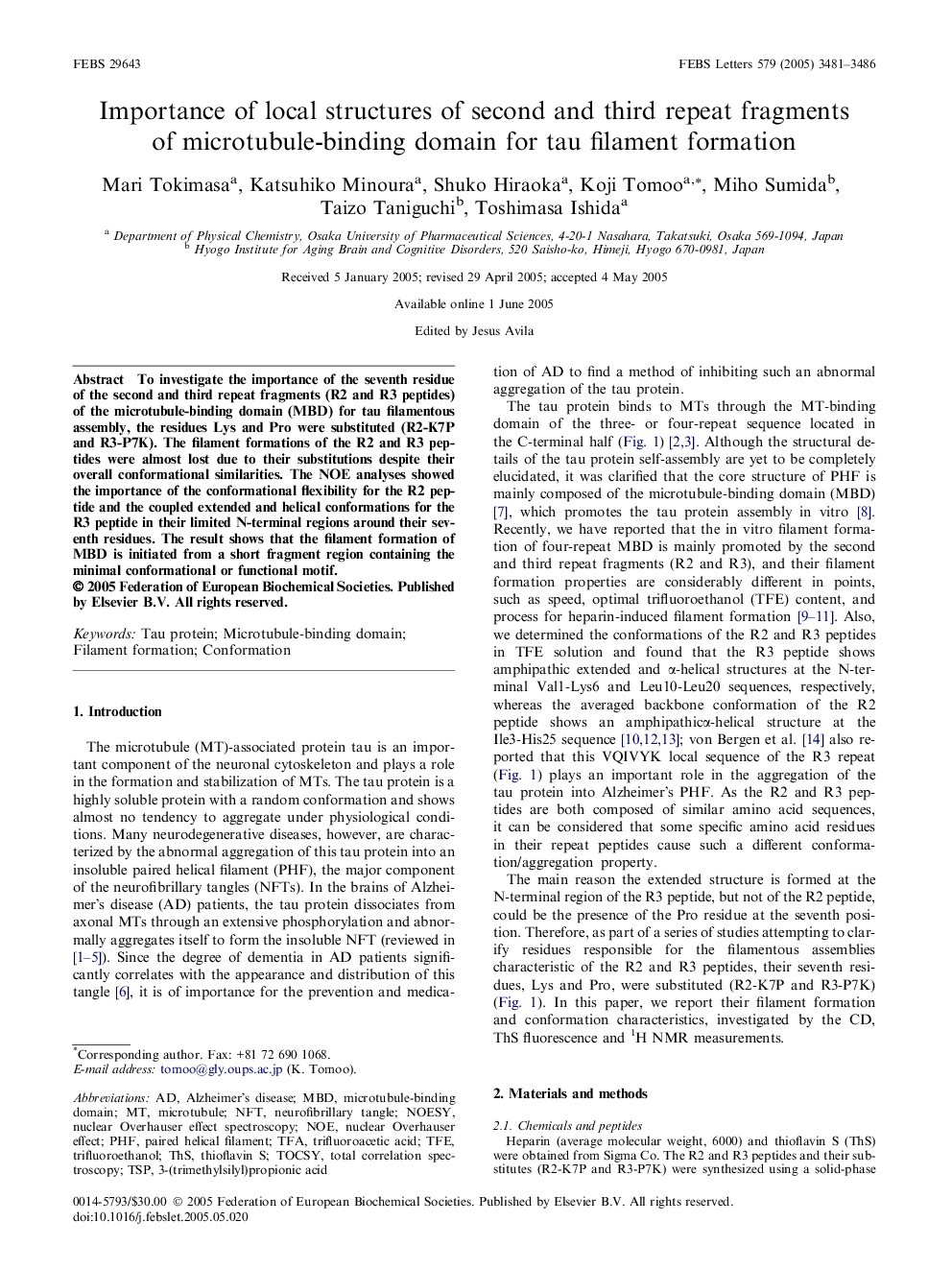| Article ID | Journal | Published Year | Pages | File Type |
|---|---|---|---|---|
| 2052404 | FEBS Letters | 2005 | 6 Pages |
Abstract
To investigate the importance of the seventh residue of the second and third repeat fragments (R2 and R3 peptides) of the microtubule-binding domain (MBD) for tau filamentous assembly, the residues Lys and Pro were substituted (R2-K7P and R3-P7K). The filament formations of the R2 and R3 peptides were almost lost due to their substitutions despite their overall conformational similarities. The NOE analyses showed the importance of the conformational flexibility for the R2 peptide and the coupled extended and helical conformations for the R3 peptide in their limited N-terminal regions around their seventh residues. The result shows that the filament formation of MBD is initiated from a short fragment region containing the minimal conformational or functional motif.
Keywords
trifluoroethanolMicrotubule-binding domainPHFNOENOESYTOCSYTFEMBDNFTTFATSPNuclear Overhauser Effect SpectroscopYTHsFilament formationnuclear overhauser effectTrifluoroacetic acidAlzheimer’s diseaseThioflavin SNeurofibrillary tanglePaired helical filamentMicrotubuleConformationTotal correlation spectroscopyTau protein
Related Topics
Life Sciences
Agricultural and Biological Sciences
Plant Science
Authors
Mari Tokimasa, Katsuhiko Minoura, Shuko Hiraoka, Koji Tomoo, Miho Sumida, Taizo Taniguchi, Toshimasa Ishida,
